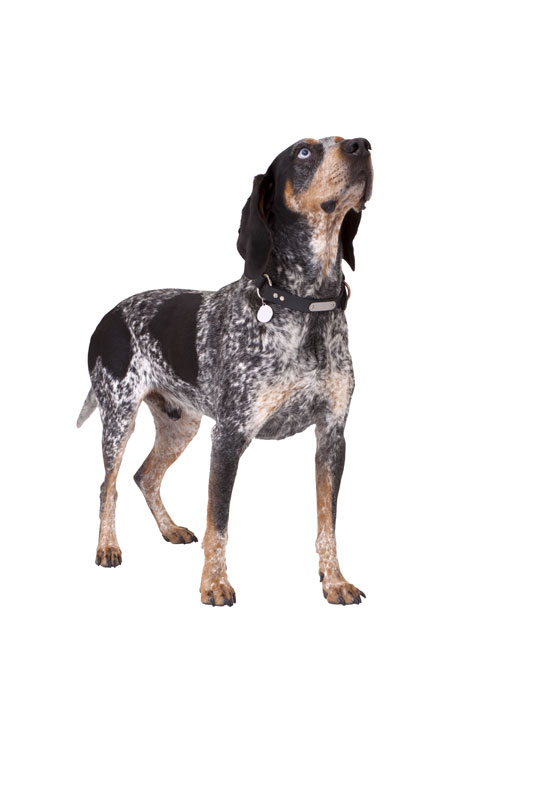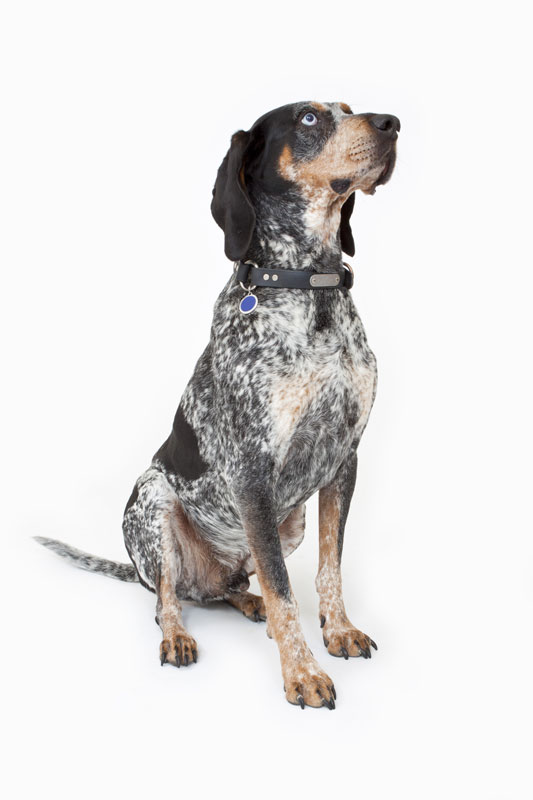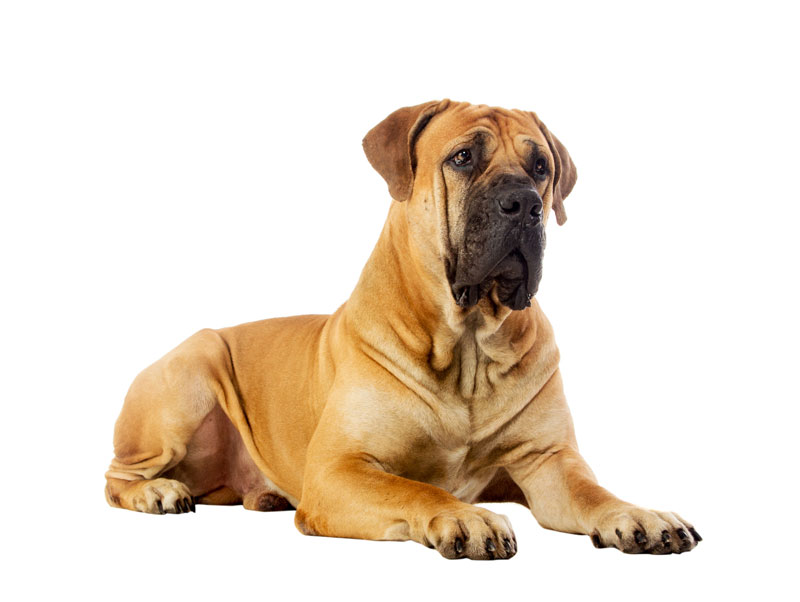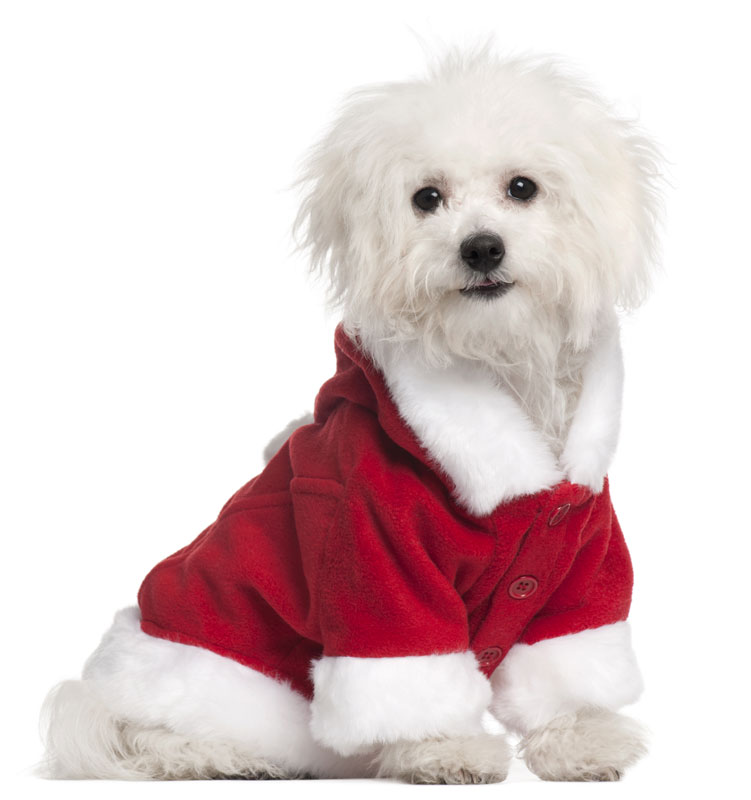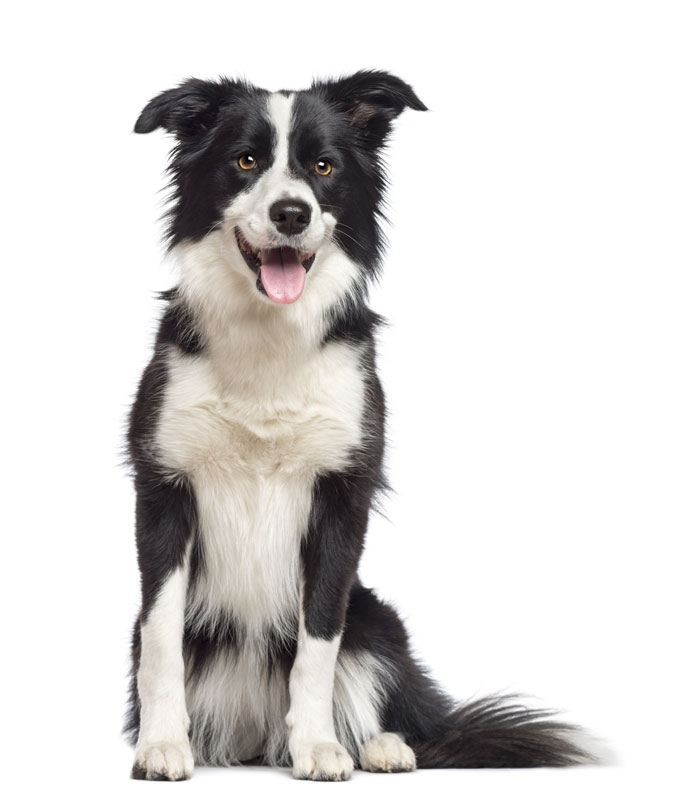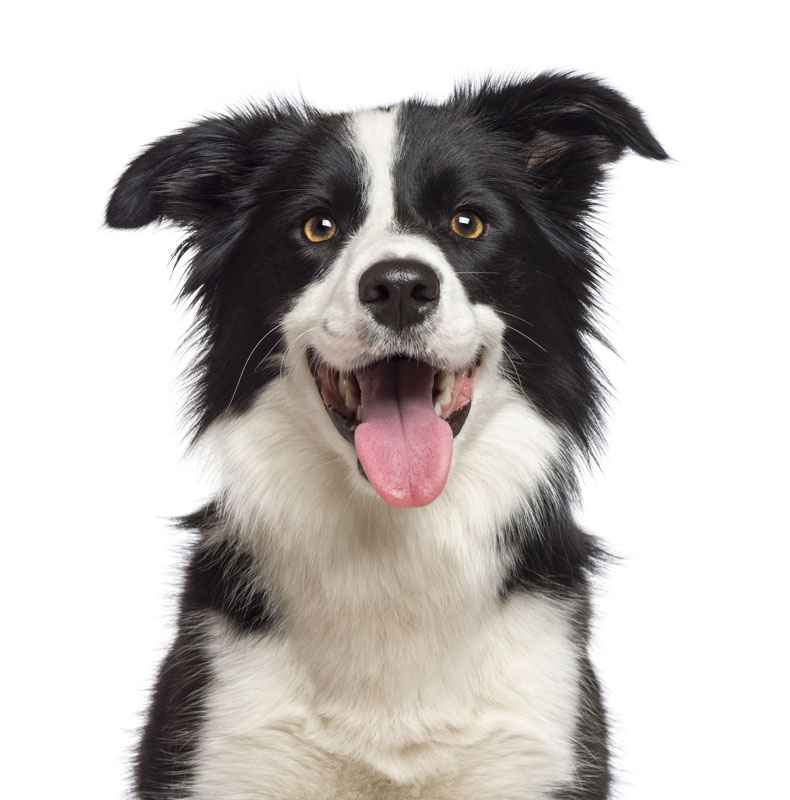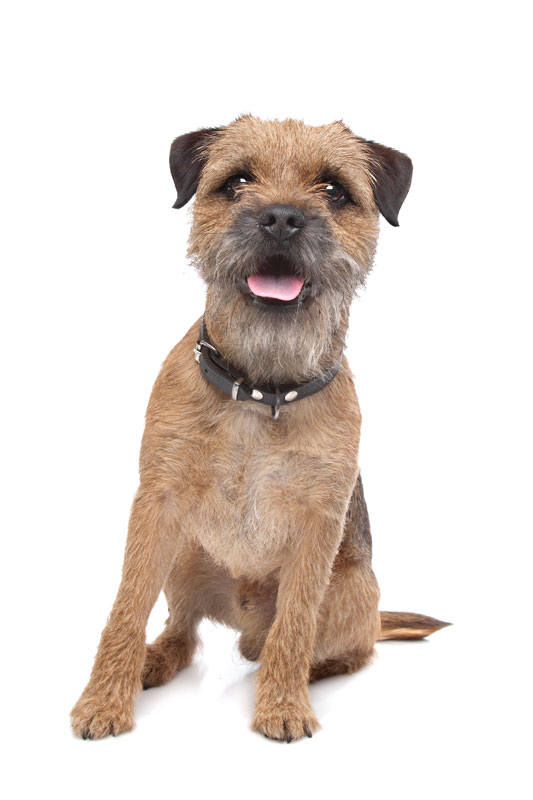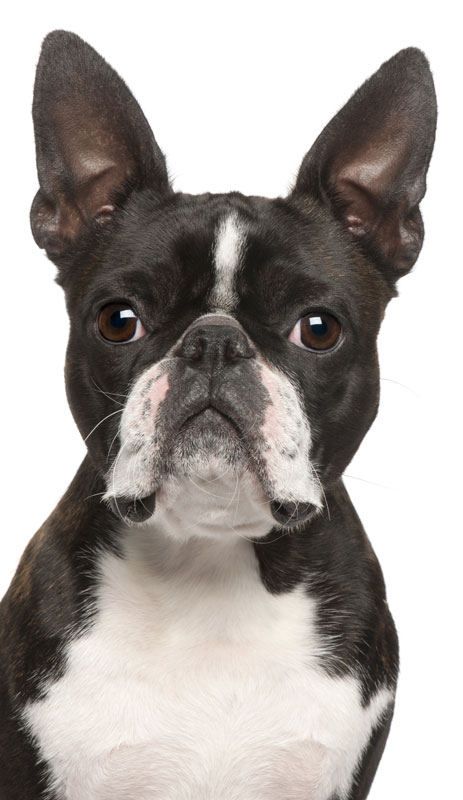Super User
Blue Paul Terrier
Blue Paul Terrier is an extinct dog breed of dog.
History
No one seems to have full knowledge as to how the Blue Pauls were bred or from where they originally came. There was a story that John Paul Jones, the Scottish born American sailor, brought them from abroad and landed some when he visited his native town of Kirkcudbright about 1770. They were game to the death and could suffer much punishment. They were expert and tricky in their fighting tactics, which made them great favorites with those who indulged in this sport. They maintained that the breed originally came from the Galloway coast, which lends support to the Paul Jones legend. The dogs to arrive in the United States with the England immigrants in the mid-19th century were the Staffordshire Bull Terrier.
Bluetick Coonhound
The Bluetick Coonhound is a breed of dog. It is a type of coonhound and typically bred in the United States.
History
The Bluetick Coonhound, which originated in Louisiana, was developed from the Bleu de Gascogne hound of southwest France, as well as the English Foxhound, the cur dog, the American Foxhound, and the Black And Tan Virginia Foxhound. Originally, Bluetick Coonhounds were registered in the United Kennel Club under the English Foxhound and Coonhound, but were recognized by the club as a separate breed in 1946. Bluetick Coonhounds are also recognized by the Australian National Kennel Council and the New Zealand Kennel Club. In April 2009 the breed was accepted by the American Kennel Club and in December 2009 they became eligible to compete in AKC coonhound events. The American Blue Gascon is a subgroup of bluetick coonhounds that is larger, heavier, and more "houndy" looking than the standard bluetick. American Blue Gascons are often referred to as "old-fashioned" blueticks. This is due to their appearance and "colder" nose, or slower style of tracking, compared to other modern coonhound breeds. The picture here appears to be of a female American Blue Gascon.
Famous Bluetick Coonhounds
Smokey, the mascot of the University of Tennessee, is a Bluetick.
A Bluetick Coonhound named Tet was the companion of Stringfellow Hawke, the main character of the popular 1980s television show Airwolf.
Old Blue, a Bluetick Coonhound, was in the 1960 Elia Kazan film, "Wild River".
Boerboel
The Boerboel is a large, molosser dog breed from South Africa, bred for the purpose of Guard dog the homestead. These dogs were often a first line of defense against predators such as lions, hyenas and other big cats and were valuable in tracking and holding down wounded game. Old farmers tell many tales of the strength, agility, and courage of their Boerboels.
Bohemian Shepherd
The Bohemian Shepherd is a dog breed of dog also known as the Chodský pes or the Chodenhund. The Bohemian Shepherd is recognized nationally in Czech Republic but is not recognized by the Fédération Cynologique Internationale or any other major kennel club.
History
Chodský pes is an old Herding dog breed. They have been also guarding Bohemian southwestern borders and homes in the area of the Chod region (around Domažlice town). "Chodové" (the Chods), the local people living there, had an exceptional permission to hold large dogs for this purpose. Alois Jirásek, writing about a brave uprising of the local people, even assigned these dogs as a flag symbol of them. Though that is actually incorrect, the symbol became part of national knowledge due to drawings of a well known Czech painter Mikoláš Aleš. The symbol of the Chodský pes is still on Czech young scouts badges.As the breed of chodský pes is old, it is possibly also one of the predecessors to the German Shepherd. Chodský pes is known to exist in the Czech lands as far back as the 14th century, and having been professionally bred as early as the 16th century. A modern breeding program for this dog was started in 1984 and there are now many breeders. About 3500 registered pups have been born since the program started (1984–2009).
Bolognese
Bolognese is someone or something from the city of Bologna. It can refer to:* Bolognese sauce
* Bolognese
* Bolognese dialect, a dialect of Emiliano-Romagnolo, a Romance language
* Bolognese School (painting)
* Bolognese Swordsmanship
* Sant'Agata Bolognese
* Bolognese bell ringing art
* Franco Bolognese
Border Collie
The Border Collie is a working and Herding dog breed developed in the English-Scottish border region for herding livestock, especially sheep. It was specifically bred for intelligence and Obedience training. Ranked number one in Stanley Coren's The Intelligence of Dogs and typically extremely energetic, acrobatic, smart and athletic, they frequently compete with great success in dog sports, in addition to their success in sheepdog trials and are often cited as the most Animal cognition of all dogs. In January 2011, a Border Collie was reported to have learned 1,022 words and acts consequently to human citation of those words.
History
The Border Collie is descended from landrace collies, a type found widely in the British Isles. The name for the breed came from its probable place of origin along the Anglo-Scottish border. Mention of the "Collie" or "Colley" type first appeared toward the end of the 19th century, although the word "collie" is older than this and has its origin in the Scots language. It is also thought that the word 'collie' comes from the old Celtic word for useful. Many of the best Border Collies today can be traced back to a dog known as Old Hemp.In 1915, James Reid, Secretary of the International Sheep Dog Society (ISDS) in the United Kingdom first used the term "Border Collie" to distinguish those dogs registered by the ISDS from the Kennel Club's Collie (or Scotch Collie, including the Rough Collie and Smooth Collie) which originally came from the same working stock but had developed a different, standardised appearance following introduction to the show ring in 1860 and mixture with different types breeds.
Old Hemp
Old Hemp, a Tricolor_(dog)#Patterns dog, was born in September 1893 and died in May 1901. He was bred by Adam Telfer from Roy, a black and tan dog, and Meg, a black-coated, strong-eyed dog. Hemp was a quiet, powerful dog that sheep responded to easily. Many shepherds used him for stud and Hemp's working style became the Border Collie style. All pure Border Collies alive today can trace an ancestral line back to Old Hemp.
Wiston Cap
Wiston Cap (b. 28 Sep. 1963) is the dog that the International Sheep Dog Society (ISDS) badge portrays in the characteristic Border Collie herding pose. He was a popular stud dog in the history of the breed, and his bloodline can be seen in most bloodlines of the modern day Collie. In the late 1890s James Lilico (1861?–1945) of Christchurch, New Zealand, imported a number of working dogs from the United Kingdom. These included Hindhope Jed, a black, tan and white born in Hindhope, Scotland in 1895, as well as Maudie, Moss of Ancrum, Ness and Old Bob.It is unclear whether Hindhope Jed was a descendant of Old Hemp. Born two years after him, she is mentioned in a British Hunts and Huntsmen article concerning a Mr John Elliot of Jedburgh:
Mr Elliot himself is well known for his breed of Collies. His father supplied Noble to the late Queen Victoria and it was from our subject that the McLeod got Hindhope Jed, now the champion of New Zealand and Australia.
At the time of her departure to New Zealand, Hindhope Jed was already in pup to Captain, another of the then new "Border" strain. Hindhope Jed had won three trials in her native Scotland, and was considered to be the "best to cross the equator".In 1901 the King and Mcleod stud, created by Charles Beechworth King (b. 1855, Murrumbidgee, NSW), his brother and Alec McLeod at Canonbar, near Nyngan (north-west of Sydney), brought Hindhope Jed to Australia, where she enjoyed considerable success at sheep dog trials.
Health
Life span
The natural life span of the Border Collie is between 10 to 17 years, with an average lifespan of 12 years. The median longevities of breeds of similar size are usually 12 to 13 years.Leading causes of death are cancer (23.6%), old age (17.9%) and cerebral vascular afflictions (9.4%). CEA is a congenital, inherited eye disease involving the retina, choroid, and sclera that sometimes affects Border Collies. In Border Collies, it is generally a mild disease and rarely significantly impairs vision. There is now a DNA test available for CEA and, through its use, breeders can ensure that they will not produce affected pups. There are different types of hip testing available including OFA (Orthopedic Foundation for Animals) and PennHip. Radiographs are taken and sent to these organizations to determine a dog's hip and elbow quality.Two types of hearing loss occur in the breed. The first type is pigment associated and is found in Border Collie puppies. The second type is known as . These dogs have a normal auditory brainstem response test as pups but gradually lose their hearing some time between one and eight years of age. A study is currently underway at The Translational Genomics Research Institute to identify the genetic cause of adult onset hearing loss in the breed.Neuronal ceroid lipofuscinosis (NCL) is a rare but serious disease that is limited to show Border Collies. NCL results in severe neurological impairment and early death; afflicted dogs rarely survive beyond two years of age. The mutation causing the form of the disease found in Border Collies was identified by Scott Melville in the laboratory of Dr. Alan Wilton of the School of Biotechnology and Biomolecular Sciences, University of New South Wales. There is no treatment or cure, but a DNA test is now available to detect carriers as well as affected dogs.Trapped Neutrophil Syndrome (TNS) is a hereditary disease in which the bone marrow produces neutrophils (white cells) but is unable to effectively release them into the bloodstream. Affected puppies have an impaired immune system and will eventually die from infections they cannot fight. The mutation responsible for TNS has been found in Border Collies in English working dogs, in show dogs that had originated in Australia and New Zealand, and in unrelated Australian working dogs. This indicates that the gene is widespread and probably as old as the breed itself. TNS was identified by Jeremy Shearman in the laboratory of Dr. Alan Wilton of the School of Biotechnology and Biomolecular Sciences, University of New South Wales. There is no cure, but a DNA test is now available to detect carriers as well as affected dogs.Other diseases found less commonly include glaucoma, juvenile cataracts, osteochondritis, hypothyroidism and diabetes mellitus. A syndrome of exercise induced collapse similar to that seen in Labrador Retrievers (otherwise termed Border Collie Collapse)and triggered by episodes of collapse associated with periods of intense exercise has been described in Border Collies in North America, Europe and Australia; and is currently the subject of further investigation.Elbow dysplasia may also occur in the breed. Dogs homozygous for the Merle (coat colour in dogs) gene, sometimes referred to as "double merles", are likely to have ocular and/or auditory defects.
In popular culture
The primary character of the New Zealand comic strip Footrot Flats and the 1986 animated film adaptation Footrot Flats: The Dog's Tale is a working Border Collie named "Dog". Although the strip featured numerous human and farm animal characters it was told from the Dog's point of view.In the film, Babe (film), the piglet Babe is adopted by a working Border Collie named Fly and taught by her to herd sheep.
Border Terrier
The Border Terrier is a small, rough-coated breed of dog of the terrier group. Originally bred as fox and vermin hunters, Border Terriers share ancestry with Dandie Dinmont Terriers,
Though the breed is much older, the Border Terrier was officially recognized by The Kennel Club in Great Britain in 1920, and by the American Kennel Club (AKC) in 1930. The border terrier was bred to have long enough legs to keep up with the horses and other foxhounds, which traveled with them, and small enough bodies to crawl in the burrows of foxes and chase them out so the hunters had a blank shot. The foxhounds that traveled with them were not small enough to do the Border terrier's job.In 2006, the Border Terrier ranked 81st in number of registrations by the AKC, while it ranked 10th in the United Kingdom.In 2008, the Border Terrier ranked 8th in number of registrations by the UK Kennel Club.
History
The Border Terrier originates in, and takes its name from, the Anglo-Scottish border. Their original purpose was to bolt foxes which had gone to ground. They were also used to kill rodents, but they have been used to hunt otters and badgers too.
The first Kennel Club Border Terrier ever registered was The Moss Trooper, a dog sired by Jacob Robson's Chip in 1912 and registered in the Kennel Club's Any Other Variety listing in 1913. The Border Terrier was rejected for formal Kennel Club recognition in 1914, but won its slot in 1920, with the first standard being written by Jacob Robson and John Dodd. Jasper Dodd was made first President of the Club.
Borzoi
The borzoi (literally "fast"), also called the Russian wolfhound, is a breed of domestic dog (Canis lupus familiaris). Descended from dogs brought to Russia from central Asian countries, it is similar in shape to a greyhound, and is also a member of the sighthound family.The system by which Russians over the ages named their sighthounds was a series of descriptive terms, not actual names. ":wiktionary:ru:борзый" is the masculine singular form of an archaic Russian adjective that means "fast". "Borzáya sobáka" ("fast dog") is the basic term used by Russians, though "sobáka" is usually dropped. The name "Psovaya" derived from the word Psovina, which means "wavy, silky coat", just as "Hortaya" (as in Hortaya Borzaya) means shorthaired. In Russia today the breed we know as the borzoi is officially known as "Russkaya Psovaya Borzaya". Other Russian sighthound breeds are "Stepnaya Borzaya" (from the steppe), called "Stepnoi"; and "Krimskaya Borzaya" (from the Crimean Peninsula), called "Krimskoi".The standard plural, "borzois", is given in most dictionaries and must therefore be considered correct. The Borzoi Club of America and the Borzoi Club UK both prefer "borzoi" as the form for both singular and plural forms (this is not the case in Russian, as the Russian plural is "borzýe").
Bosnian Coarse-haired Hound
The Bosnian Coarse-haired Hound or Bosanski Oštrodlaki Gonič, also called the Barak, is a hunting dog breed developed in Bosnia. The breed is a scenthound originally used to hunt large game. The "Bosanski Oštrodlaki Gonič's" name is translated as coarse-haired, broken-haired, and rough-haired (among others), and refers to the texture of the shaggy coat (usually called broken-haired or hard in English.)
History
The former name given to the breed was Illyrians Hound, referring to a pre-Slavic people of the area. Today's breed is descended from indigenous dog types, crossed with an Italian gun dog in the 1890s. "Local hunters, wanting to produce an efficient scent hound, developed this breed in the nineteenth century, using the available stock of dogs." The early type of today's smaller Istrian Shorthaired Hound may also have contributed to the Bosnian Coarse-haired Hound.The Bosnian Coarse-haired Hound was first recognised by the Fédération Cynologique Internationale in 1965 under the name of "Illyrian Hound". The name was changed to more accurately describe its area of origin in Bosnia. The breed is in Group 6, Scenthounds, Section 1.1 Large-sized Hounds, and is breed number 155. It is also recognised by the United Kennel Club (US) as the "Barak", in the Scenthound Group. The breed is not recognised by any other major kennel clubs in the English speaking world, although many minor kennel clubs, internet dog registry businesses, and Rare breed registries promote and register it as a unique pet.
Boston Terrier
The Boston Terrier is a breed of dog originating in the United States of America. This "American Gentleman" was accepted in 1893 by the American Kennel Club as a non-sporting breed. Color and markings are important when distinguishing this breed to the AKC standard. They should be either black, brindle or seal with white markings. They are friendly and can be stubborn at times. The average life span of a Boston is around 11 to 13 years, though some can live well into their teens.
History
The Boston Terrier breed originated around 1870, when Robert C. Hooper of Boston, purchased a dog Judge from Edward Burnett known later as Hooper's Judge, who was of a Bull and Terrier type lineage. Hooper's Judge is either directly related to the original Bull and Terrier breeds of the 18th and early 19th centuries or Judge is the result of modern English Bulldogs being crossed into terriers created in the 1860s for show purposes, like the White English Terrier.Judge weighed over 27.5 pounds (13.5 kilos). The offspring interbred with one or more French Bulldogs, providing the foundation for the Boston Terrier. Bred down in size from List of dog fighting breeds of the Bull and Terrier types, the Boston Terrier originally weighed up to 44 pounds (20 kg.) (Olde Boston Bulldogge).
= Size
=According to international breed standard, the dog should weigh no less than 10 pounds and no more than 25 pounds. Boston Terriers usually stand 15-17 inches at the withers. Their usually sensible attitude towards barking makes them excellent choices for apartment dwellers. Having been bred as a companion dog, they enjoy being around people, and if properly socialized, get along well with children, the elderly, other canines, and non-canine pets.Bostons, along with Pug, Shih Tzu and other short-snouted breeds are Cephalic_index#Brachycephalic_animals breeds. The word comes from Greek roots "Brachy" meaning short and "cephalic" meaning head. This anatomy can cause tiny nostrils, long palates and a narrow trachea. Because of this, Bostons may be prone to snoring and
Reverse sneezing, a rapid and repeated forced inhalation through the nose, accompanied by snorting or gagging sounds used to clear the palate of mucus, which does not harm the dog in any way. Brachycephalic dogs may be prone to complications with general anesthesia. To decrease this risk, the owner should seek an experienced and knowledgeable vet to perform any necessary surgeries. The best way to stop the dog from reverse sneezing is to rub their necks.Bostons frequently require caesarean section to give birth, with over 90% of litters in a UK Kennel Club survey delivered this way.

